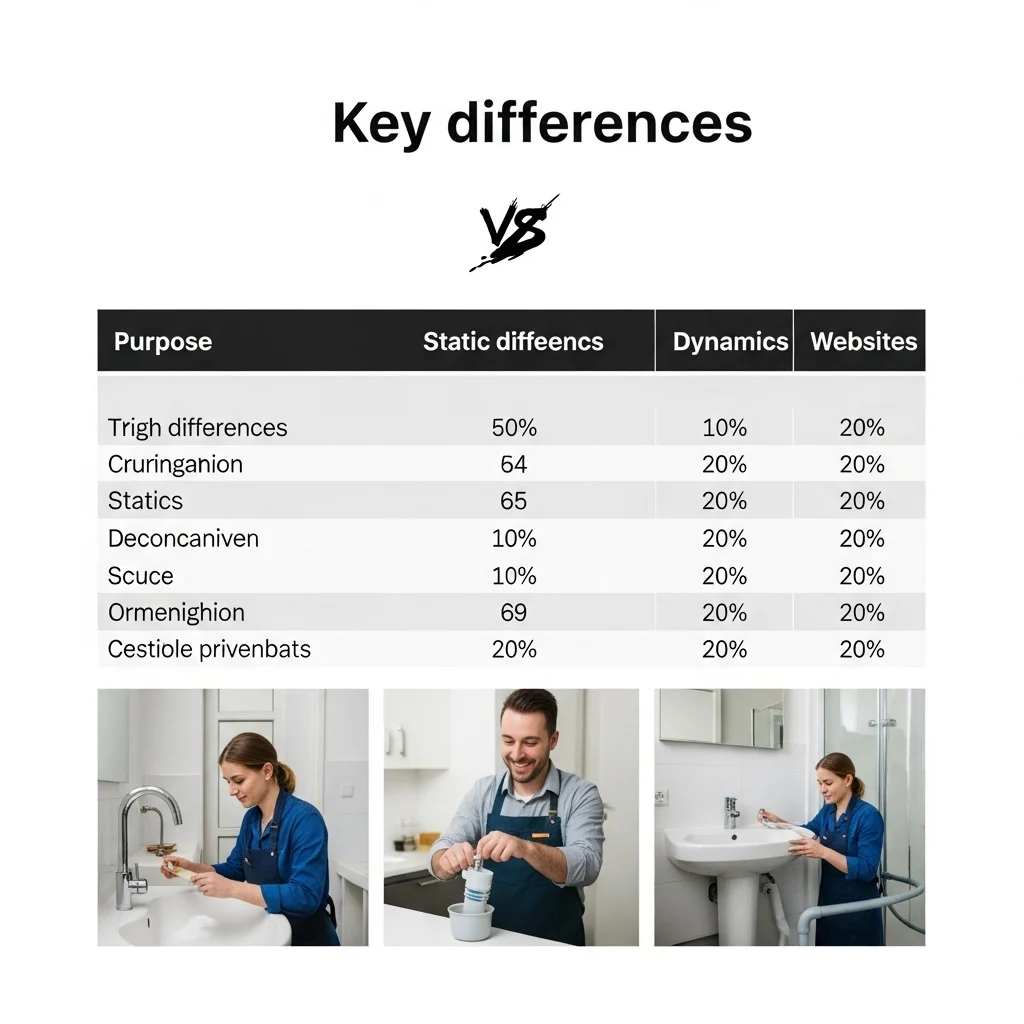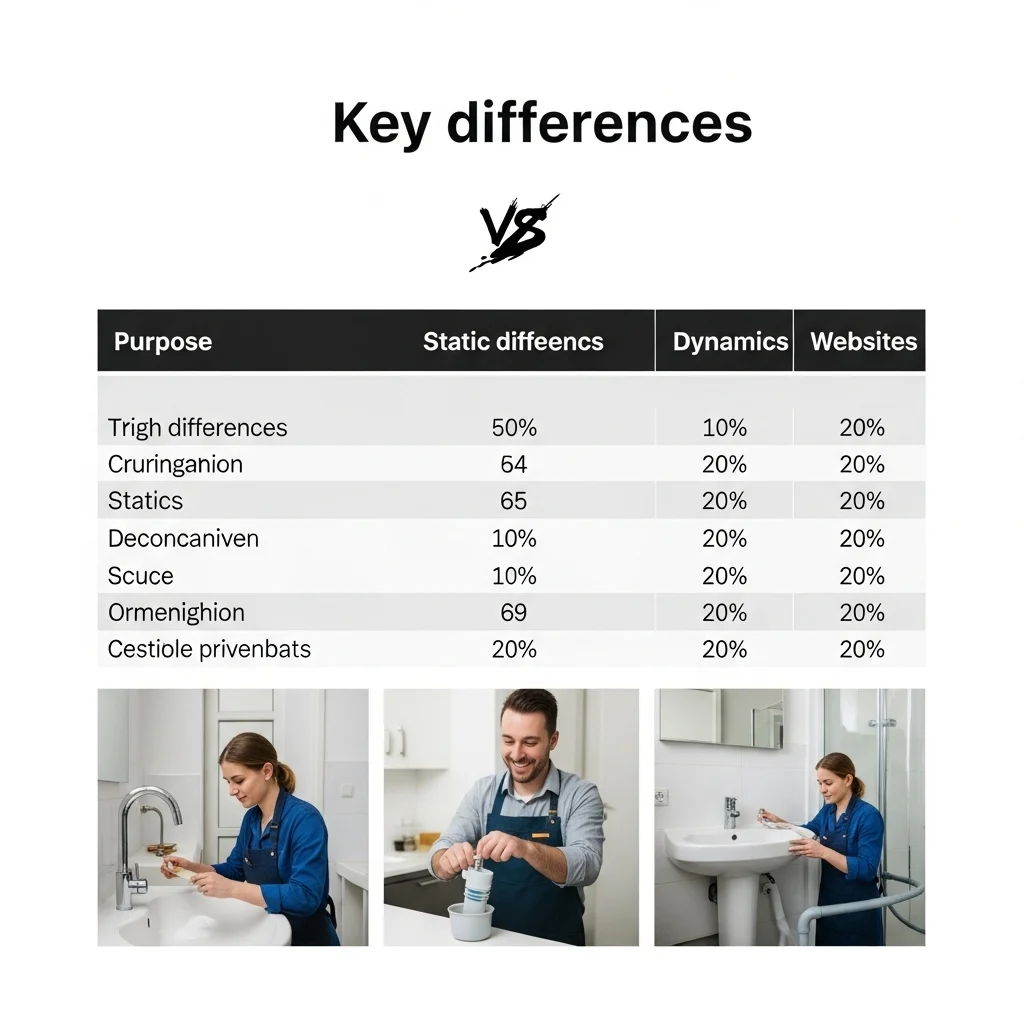Static vs Dynamic Websites: The SEO Battle

What Exactly Are Static and Dynamic Websites?
Welcome, courageous freelancers, small business champions, and curious Googlers! Wondering, “Do I really need a website?” You’ve landed in the perfect spot. Grab your coffee (or that questionable soda), and let’s dive into the exciting world of websites—specifically the epic showdown between Static and Dynamic websites and their secret weapon: SEO. Think Batman vs. Superman, but with code and fewer capes.
Imagine a static website as a timeless museum painting: consistent and unchanging unless a dedicated artist updates it. Built on sturdy HTML with some CSS and occasional JavaScript, static sites serve individual pages that look the same for every visitor.
Static website highlights:
- Content updates require manual editing—no automation magic here.
- Lightning-fast loading speeds due to simple file delivery.
- Ideal for portfolios or digital business cards.
Now, picture a dynamic website as a bustling café where menus shift daily and the barista remembers you. These sites run on server-side languages like PHP, Python, or Node.js, pulling content live from databases. Need comments, user logins, online stores, or fresh blog posts? Dynamic handles it all.
Dynamic website features:
- Content updates happen seamlessly without touching code.
- Rich user interactions like carts, forums, and profiles.
- URL structures can be SEO-friendly when configured properly.
Quick analogy: If websites were TV shows, static would be Friends—reliable and classic; dynamic is Black Mirror—always evolving with surprises.

The Key Differences: The Table of Truth
| Feature | Static Website | Dynamic Website |
|---|---|---|
| Content | Fixed and manually updated | Continuously updated and dynamic |
| Maintenance | Manual code edits | Managed via Content Management Systems |
| Technology | HTML, CSS, basic JavaScript | PHP, Python, Node.js plus databases |
| Speed | Ultra-fast loading ⚡ | Can be slower; caching improves speed |
| User Interaction | Minimal | Extensive – comments, carts, logins |
| Cost & Time | Affordable and quick to launch | Time-intensive with higher investment |
| Security | Generally more secure | Requires active security management |
| SEO | Simple optimization, limited changes | Powerful SEO tools and frequent content |
Remember, websites are more than digital flyers—they’re dynamic platforms requiring skill and care.

SEO: The Undisputed Champion
No matter how stunning your site looks, if Google ignores it, you’re unseen. Here’s how SEO stacks up for each:
Static SEO Advantages
- Speed: Google favors sites loading faster than your morning java. Static sites deliver simple files—zoom!
- Clean URLs: Straightforward URLs help Google index your site better.
- Caveat: Content updates are rare, and Google loves fresh content.
Dynamic SEO Strengths
- Fresh Content: Regular blog posts and updates keep Google happy.
- SEO Plugins: Platforms like WordPress offer robust SEO tools managing meta tags, sitemaps, and more.
- Enhanced UX: Personalized experiences boost visitor engagement and improve rankings.
- Potential Slowdowns: Complexity might impact speed, but smart hosting and caching fix this.
Fun fact: Google tracks visitor time on your site—better user experience means better rankings!

DIY Website Woes: A Cautionary Tale
One freelancer friend decided to build a dynamic website using a free template. It looked promising at first but soon revealed glitches:
- Slider stuck on the welcome screen.
- SEO instructions felt like decoding ancient scripts.
- Updates were nerve-wracking, risking site crashes.
Lesson learned: Just because building a website yourself is possible doesn’t mean it’s the best choice—especially if time is precious.
Choosing Your Champion: Static or Dynamic?
Want a fast, no-fuss digital business card? Static is your go-to—like a classic car with fewer parts to maintain.
Need frequent updates, sales features, and user interaction? Dynamic is the Swiss Army knife for your online presence.
Pro tip: Dynamic sites often dominate SEO, but with expertise, static sites can still perform impressively.
Final Thoughts (Plus a Dad Joke)
In summary, static websites are your dependable internet grandparents, while dynamic ones are the tech-savvy millennials buzzing with fresh updates.
Building your website shouldn’t feel like assembling IKEA furniture blindfolded. If wrestling with code keeps you up at night, consider reaching out to web pros who enjoy this stuff (yes, they exist).
Your website can be your hardest-working team member—built right, it works while you play. Need help or some laughs along the way? Visit djoeraganwebsite.com to get your website singing so you can do what you love.
Stay sharp, stay savvy, and may your SEO always rank high!






